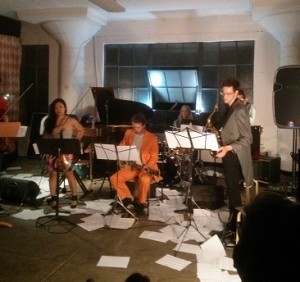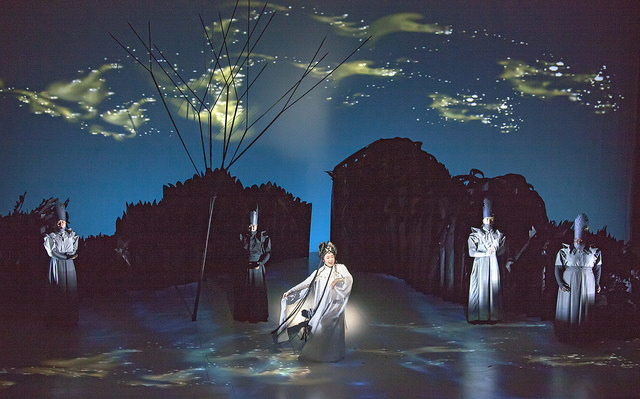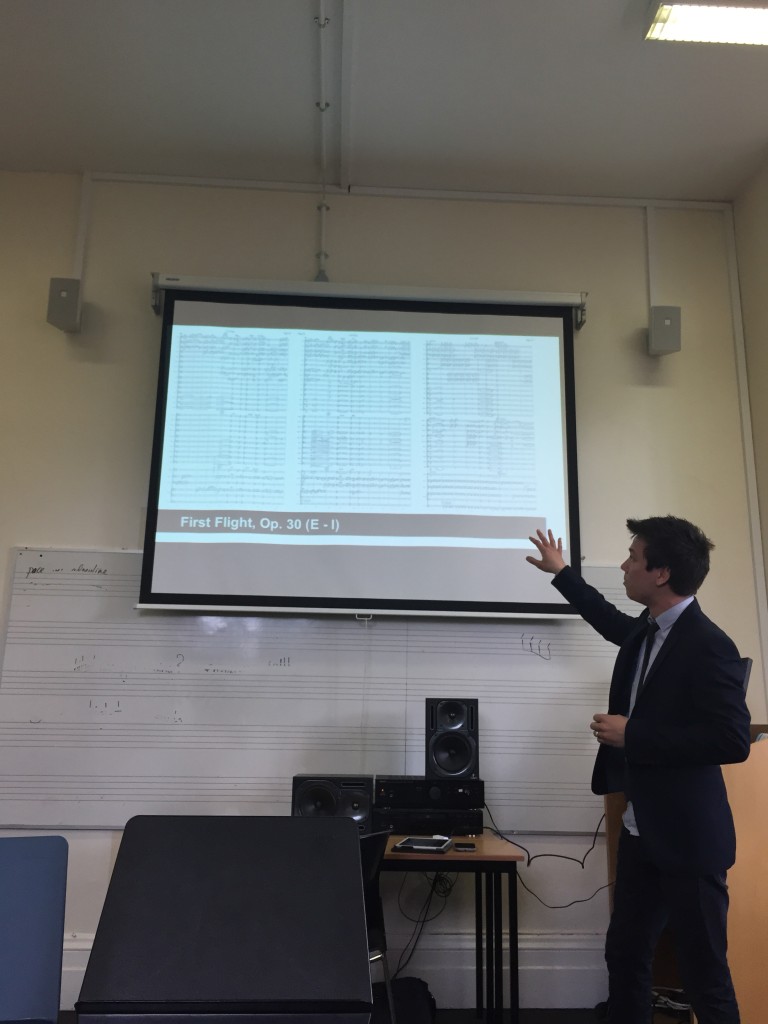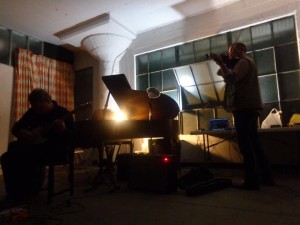 The Dog Star concert series, sponsored by Cal Arts, is a Los Angeles cultural landmark that features new music in a number of venues around town over the course of some 18 days. On Saturday, May 23, 2015 the Happy Valley Band arrived from Santa Cruz to present a Dog Star concert at the Wulf along with the group Desert Magic. A standing-room crowd packed into the smallish venue for an evening of original rounds and a high-powered experimental transcription of “the Great American Songbook heard through the ear of a machine.”
The Dog Star concert series, sponsored by Cal Arts, is a Los Angeles cultural landmark that features new music in a number of venues around town over the course of some 18 days. On Saturday, May 23, 2015 the Happy Valley Band arrived from Santa Cruz to present a Dog Star concert at the Wulf along with the group Desert Magic. A standing-room crowd packed into the smallish venue for an evening of original rounds and a high-powered experimental transcription of “the Great American Songbook heard through the ear of a machine.”
Desert Magic opened and presented several pieces from their upcoming CD A Round The Sun. Alex Wand, Steven Van Betten and Logan Hone played variously guitar, percussion, saxophone and all sang vocals. All of their music is in the form of a round and draws small vignettes about everyday topics and events. Some of the lyrics heard included “blood moon selfie”, “I was born under the desert sun”, “howl at the moonlight” and “the battery in the camera died and I saw a real sunset”. There was even a a piece whose patter was built around “Dog Star” and this drew some knowing laughs from the audience. The blend of guitar and vocals had a pleasant, folk-like feel and the round form produces an engaging texture. A variety of simple percussion elements brought out the beat, and added to a pleasing groove. The singing was often in harmony and perhaps Desert Magic could have wished for better acoustics, but the audience was generally charmed by this performance. Desert Magic is releasing the music from their CD on the solstices and equinoxes of the year 2015.
The Happy Valley Band followed, comprised of piano, two violins, electric guitar, two saxophones, electric bass and drum kit – various combinations of these instruments were employed for the different pieces performed at this concert. According to the program notes “ the ensemble plays transcriptions of popular music classics, made through a process of machine listening and sound analysis.” This is a massive oversimplification – the processing of a classic pop tune involves three major stages: audio separation, pitch plus rhythm analysis and symbolic notation generation. According to David Kant’s website the process proceeds as follows: “ First, the original audio recordings are separated into individual instruments using signal processing tools. The separated instruments are then translated into raw note on and off data through pitch and amplitude analysis. Finally, the raw note data is transcribed to music notation.” The end result is a computational rendering of what the machine has perceived within the recorded music, and this is translated into a musical score and performed for humans to hear. An excellent technical summary of the entire process appears here.
The first piece played by the Happy Valley Band was It’s a Man’s World by James Brown and is a good example of how all the processing actually sounds. It began with a frantic series of runs by the two violins, with loud entrances quickly following by the drums, bass, guitar and saxophone. The notes from the players come in sheets as an overwhelmingly complex texture, but at the same time the voice of James Brown was heard singing the familiar tune – a kind of cantus firmus that anchored the listener against the whirlwind of rapid variations. The rhythms of each instrument sounded independent – the players followed their scores using the pulse from the sung lyrics and not from a formal beat, but this only added to the originality of the sound. Not surprisingly, the pitches and harmonies always felt connected to the familiar tune, being derived from the same materials.
The drums, bass and electric guitar, especially, pushed the volume up to hard rock levels and this nicely complimented the source material. The organic complexity in the playing was reminiscent of the music of Brian Fernyhough and the use of pop classics as a starting point provided a reassuring measure of accessibility. The volume and high energy level brought a sense of spectacle that quickly captured the attention of the audience. The sheet music for each piece ran to dozens of pages, and these were tossed off the stands by the musicians and fell to the floor in great white heaps.
A number of pieces were played including You Make Me Feel Like A Natural Woman by Aretha Franklin, Suspicious Minds (We’re Caught In a Trap) – the Elvis standard, Ring of Fire by Johnny Cash and several others. The soulful music always worked well and Suspicious Minds was surprisingly powerful, especially the chorus where the saxophones produced an outburst worthy of Coltrane in his late free jazz period. The music seemed to come in waves, washing out over the audience in great surges like some primal force.
The Happy Valley Band has created a very appealing mix from the most unlikely elements – highly complex music played at rock band decibels and fashioned from the pop classics of the past.
The Happy Valley Band is:
Alexander Dupuis (guitar),
Conrad Harris (violin)
Pauline Kim Harris (violin)
Beau Sievers (drums)
Andrew Smith (piano)
Mustafa Walker (bass)
David Kant (saxophone and arrangement)
Special Guest: Casey Anderson (saxophone)
The Dog Star 11 concerts continue through June 2, 2015 at various venues around town.


